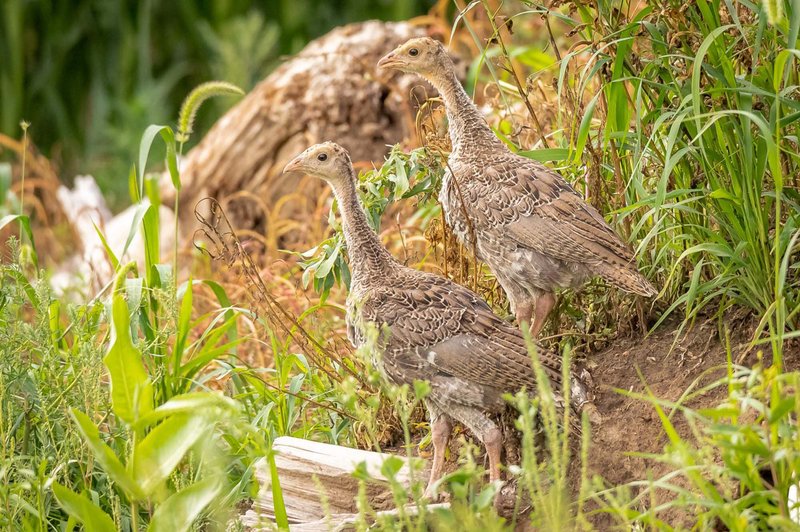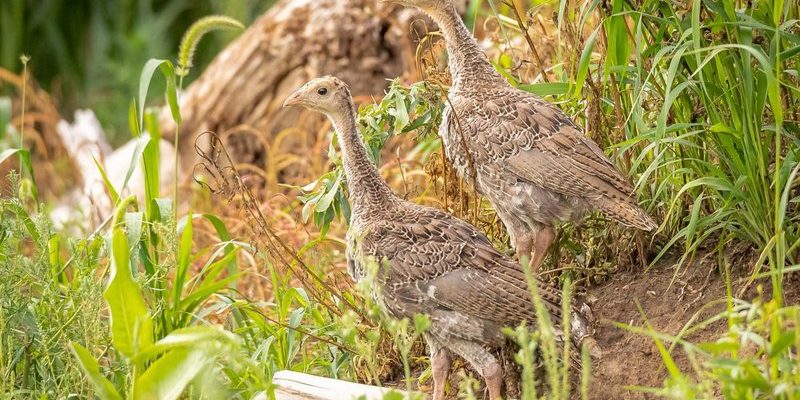
Understanding the world of turkeys is important for many reasons. For wildlife enthusiasts, knowing how they nest and grow can deepen appreciation for these birds. For farmers and those involved in conservation, recognizing their habits aids in effective management. So let’s dive into the captivating journey of turkeys, from nesting to the growth of their chicks, and explore how they thrive in various environments.
The Nesting Process
Turkeys typically prefer to nest on the ground. They look for sheltered spots under bushes or in tall grass—places where they can feel safe. The female, or hen, will create her nest by scratching the ground, forming a shallow depression. She’ll add dried leaves, grass, and feathers to make a cozy bed for her future eggs. Imagine her like a careful interior designer, making sure everything is just right for her little ones.
The hen doesn’t just lay her eggs anywhere. She usually lays about 10 to 15 eggs in one clutch, which can be quite a handful! After laying the eggs, she’ll settle in for the incubation period, which lasts around 28 days. During this time, she’s incredibly dedicated, often leaving the nest only to eat or drink. It’s a bit like being on a mission—her sole focus is to keep those eggs warm and safe.
Interestingly, many hens will display what’s called *scratching behavior*, where they use their feet to dig and cover the nest with dirt or leaves after laying an egg. This behavior not only keeps her eggs hidden from predators but also helps in regulating temperature, ensuring her future chicks have the best chance at hatching.
The Importance of Camouflage
Camouflage plays a huge role in the nesting habits of turkeys. The color of a turkey’s feathers helps them blend into their surroundings, making it harder for predators to spot them. Think of it like a nature-designed invisibility cloak. When it comes to nesting, this is crucial. A well-camouflaged nest can mean the difference between life and death for the eggs.
But it’s not just about the colors. The placement of the nest is equally important. Hens often choose areas that are surrounded by dense foliage, providing extra protection. They may also change locations if they sense danger, demonstrating their instinct to safeguard their future offspring.
The strategy behind this camouflage highlights how adaptable turkeys are. They’ve developed behaviors that allow them to succeed in various environments, from forests to grasslands. This adaptability is vital for their survival, especially in areas with high predator populations.
The Hatching Stage
After about 28 days of incubation, the exciting hatching stage begins. The chicks are ready to emerge, and this moment is a sight to behold. As the first chick breaks through the shell, there’s a flurry of movement in the nest. The mother turkey’s role during this stage is crucial; she will often guide her chicks once they hatch, ensuring they know how to find food and water.
Chicks are precocial, meaning they’re relatively developed when they hatch. They can walk, run, and even forage for food shortly after emerging. It’s like they are born ready to take on the world! This self-sufficiency is essential in the wild, where they need to avoid predators right from the start.
Once the chicks are out, they stay close to their mother. She leads them to food and teaches them important survival skills. The bond between the hen and her chicks is strong, and she stays with them for several weeks. It’s fascinating to witness this connection, as it shows how vital maternal care is in the early stages of life.
The Development of Young Turkeys
Young turkeys, called poults, go through remarkable changes in their first few months. Right after hatching, they’re covered in down feathers, which provide some warmth but not much protection from the elements. As they grow, they’ll gradually shed these downy feathers and develop the characteristic shiny plumage of adult turkeys.
In their first few weeks, poults are highly active and curious. They love to explore their environment, pecking at everything they can find. It’s similar to how toddlers are always getting into things and learning about the world around them. This foraging behavior is crucial, as it helps them learn what’s safe to eat and what to avoid.
Nutrition is also critical during this growth phase. A well-balanced diet is essential for proper development. Hens often lead their chicks to various food sources, including seeds, insects, and berries, teaching them what to look for. This early education plays a significant role in their survival, as knowing how to find food is one of the first lessons they need to learn.
Young Turkeys and Fledging
As turkeys mature, they reach a stage called fledging. This is when they begin to develop their flight feathers and learn how to take to the sky. It’s an exciting time for them, as flight opens up new opportunities for exploration and safety. Imagine them as teenagers learning to drive—gaining independence and learning to navigate their world.
Fledging typically occurs around 12 weeks of age. During this period, they start to spend more time apart from their mothers, exploring further distances and honing their flight skills. It’s a big step toward becoming fully independent. While they still rely on their mothers for guidance and safety, they begin to assert their own identities in the flock.
Here’s the thing: even though they’re becoming independent, young turkeys are still vulnerable to predators. They must stay alert and learn to use their flight skills effectively. The experience they gain during this time is vital for their survival as they transition from dependents to young adults.
Understanding the Lifecycle of Turkeys
The lifecycle of turkeys is a fascinating journey, from egg to adult. After fledging, young turkeys will continue to grow, eventually joining flocks of other young birds. They’ll stay with these groups through their first winter, learning social behaviors and foraging techniques.
Adult turkeys can live for several years, with some reaching up to five years old in the wild. They’ll return to their nesting grounds each spring to mate and lay eggs, continuing the cycle. It’s a beautiful rhythm of life that connects each generation of turkeys. This cyclical nature ensures that turkeys remain an integral part of their ecosystems.
In agriculture and wildlife conservation, understanding the lifecycle of turkeys helps in managing populations effectively. It allows farmers and conservationists to support healthy turkey populations and ensure they thrive in their habitats.
Turkeys are truly remarkable creatures, and their nesting habits and lifecycle offer a captivating glimpse into their world. From carefully hidden nests to their impressive growth into independent adults, each stage tells a story of survival and adaptation. As we continue to learn about these birds, we unlock more secrets of nature’s design.
Whether you’re watching them in the wild or enjoying their presence in your backyard, appreciating turkeys helps us understand the balance of life in nature. They’re not just a symbol of Thanksgiving; they’re a reminder of the beauty and complexity of the natural world. So next time you see a turkey, take a moment to think about its journey—there’s a lot more happening than meets the eye!

